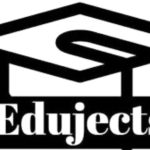This article provides a detailed revision guide for SS 3 students focusing on Data Processing in the second term. It includes comprehensive explanations, practical examples, and revision questions to enhance understanding and prepare students for examinations. The topics covered build on essential data processing skills required in advanced studies and the professional world.
Week 1-2: Graphic Packages
Graphic packages are software applications designed for creating and editing visual content, such as images, diagrams, and illustrations.
Key Concepts:
- Definition: Graphic packages are tools for creating and manipulating graphics.
- Types: Bitmap-based (e.g., Adobe Photoshop) and vector-based (e.g., CorelDRAW, Adobe Illustrator).
- Features: Layers, color management, tools for drawing and editing shapes, text manipulation, and image export options.
- Uses: Advertising, branding, web design, digital art, and publishing.
Likely Examination Questions:
- Define graphic packages and give two examples.
- Differentiate between bitmap and vector graphics.
- Mention three features of graphic packages.
- Explain the importance of layers in graphic design.
- List five uses of graphic packages.
- What are the advantages of vector graphics over bitmap graphics?
- Name two commonly used graphic file formats.
- What is color management in graphic design?
- State two examples of bitmap-based graphic software.
- Describe the role of graphic packages in web design.
Week 3: CorelDRAW
CorelDRAW is a popular vector graphics editor widely used in professional design.
Key Concepts:
- Overview: CorelDRAW is known for its intuitive interface and powerful design tools.
- Features: Tools for drawing, shaping, and editing objects; text handling; color palettes; and effects.
- Applications: Logo design, banners, brochures, and technical illustrations.
- Advantages: Scalability of vector designs, precision, and compatibility with other software.
Likely Examination Questions:
- What is CorelDRAW used for?
- Mention three features of CorelDRAW.
- How does CorelDRAW differ from Adobe Photoshop?
- List three uses of CorelDRAW in professional design.
- What is the significance of the Bezier tool in CorelDRAW?
- How do you save a CorelDRAW project in a PDF format?
- Explain the importance of nodes in vector design.
- What is the difference between a tool and a palette in CorelDRAW?
- Name two types of effects available in CorelDRAW.
- Describe how to create a logo using CorelDRAW.
Week 4: Object
An object in graphic design refers to any shape, text, or image created or imported into a graphic package.
Key Concepts:
- Types of Objects: Shapes, text, imported images, and lines.
- Properties of Objects: Size, color, position, and orientation.
- Applications: Creating designs, grouping for complex layouts, and applying effects.
Likely Examination Questions:
- Define an object in graphic design.
- Mention three types of objects in CorelDRAW.
- How do you change the color of an object?
- What is the difference between grouping and ungrouping objects?
- State the steps to resize an object in CorelDRAW.
- Explain the importance of layers in managing objects.
- How do you copy and paste an object?
- Describe how to align multiple objects.
- What is the role of the “Snap to Grid” feature?
- How can you lock an object in place?
Week 5: Object Transformation
Object transformation involves changing an object’s size, orientation, and position to achieve the desired design effect.
Key Concepts:
- Types of Transformations: Scaling, rotating, skewing, and mirroring.
- Tools for Transformation: Transformation handles, numeric inputs, and transformation dialog boxes.
- Applications: Creating dynamic layouts and customizing objects.
Likely Examination Questions:
- What is object transformation?
- List three types of object transformations.
- How do you rotate an object in CorelDRAW?
- Explain the significance of scaling an object.
- What is the difference between skewing and mirroring?
- How do you undo a transformation?
- Mention two tools used for transforming objects.
- Describe how to use transformation dialog boxes.
- Why is object transformation important in graphic design?
- State the steps to duplicate an object with transformation applied.
Week 6-7: Object Editing/Arrangement
Editing and arranging objects involve adjusting their properties and organizing them within the layout.
Key Concepts:
- Editing: Changing size, color, or effects.
- Arrangement: Aligning, grouping, layering, and distributing objects.
- Applications: Organizing elements in logos, banners, and brochures.
Likely Examination Questions:
- What does object editing mean?
- How do you align objects to the center of a page?
- What is the purpose of grouping objects?
- Explain how to change the color of an object.
- Describe the “Send to Back” function.
- How do you duplicate objects in CorelDRAW?
- What is the difference between alignment and distribution?
- Name two tools used for arranging objects.
- What is the importance of object layering?
- How do you lock an object to prevent editing?
Week 8-9: Working with Layouts
Layouts are the arrangement of objects, text, and images within a design space.
Key Concepts:
- Components of a Layout: Margins, guides, and grids.
- Design Principles: Balance, contrast, alignment, proximity, and white space.
- Applications: Magazine design, poster creation, and web layouts.
Likely Examination Questions:
- Define a layout in graphic design.
- Mention three components of a layout.
- What are design principles, and why are they important?
- Explain the role of grids in layouts.
- How do you create a balanced layout?
- What is white space, and why is it important?
- Describe how to use margins in a layout.
- Name two tools for adjusting layouts in CorelDRAW.
- What is the significance of contrast in design?
- How do you export a layout as an image?
Week 10-11: Maintenance of Computers
Maintaining computers involves keeping hardware and software in optimal condition to ensure performance and longevity.
Key Concepts:
- Hardware Maintenance: Cleaning, checking connections, and replacing faulty components.
- Software Maintenance: Updating software, running antivirus scans, and clearing temporary files.
- Preventive Measures: Avoiding overheating, ensuring proper ventilation, and using surge protectors.
Likely Examination Questions:
- What is computer maintenance?
- Mention two types of computer maintenance.
- How do you clean a computer’s hardware safely?
- Explain the purpose of software updates.
- List three preventive measures for maintaining computers.
- What are temporary files, and why should they be cleared?
- Describe the importance of antivirus software.
- What is the role of surge protectors in computer maintenance?
- How can overheating damage a computer?
- State two benefits of regular computer maintenance.

